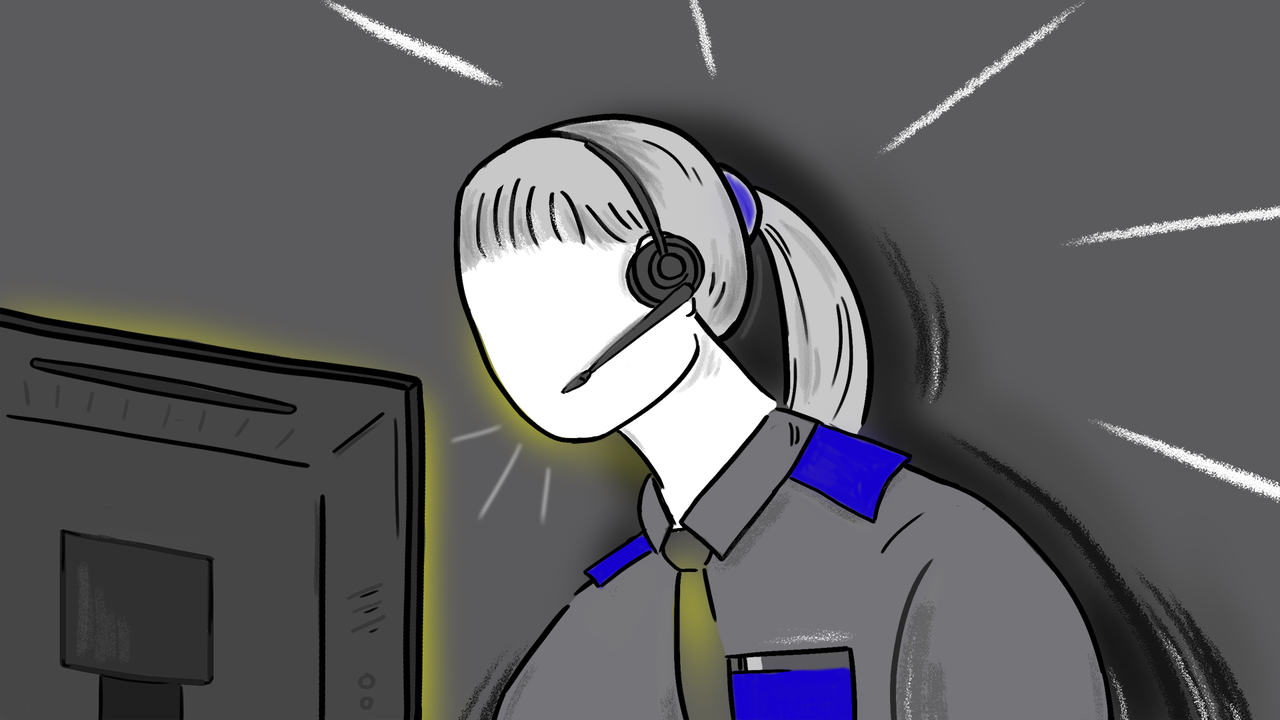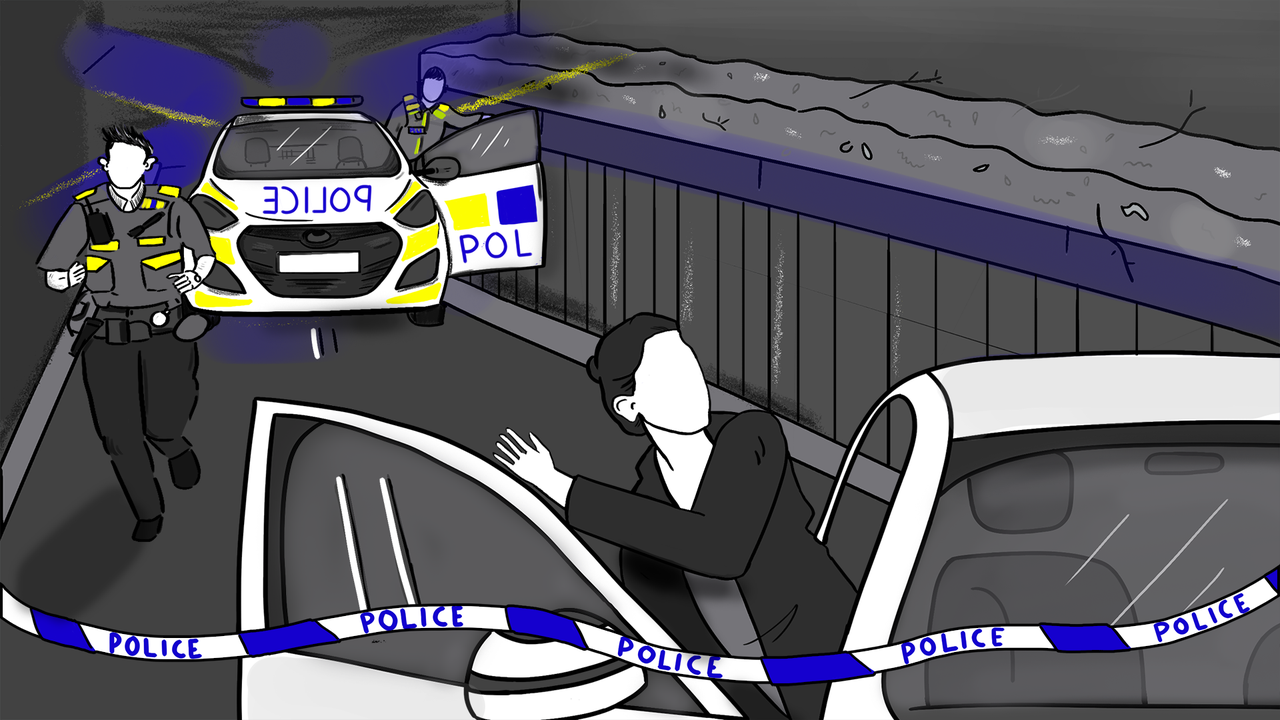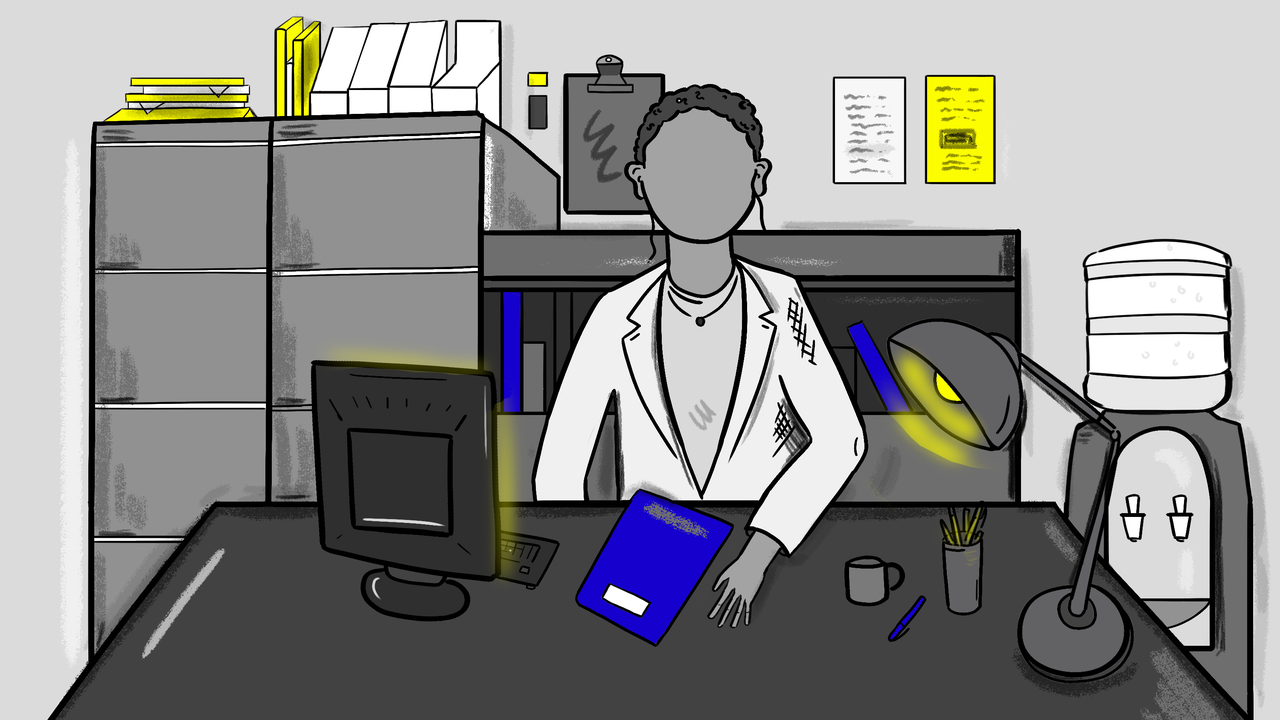A teenager has been stabbed. It’s chaos.
There’s screaming, people are running around, scattering. Nobody’s sure what just happened.
This is a scenario being played out nearly every day in cities across the country, as knife crime reaches unprecedented levels.
Last year there were 285 killings using a knife in England and Wales – the highest number since records began. Five thousand people were admitted to hospital due to knife attacks.
As the situation worsens, it’s been described by police as a “national emergency”. Stop and search powers across the country have been increased, and there are plans to give teachers more responsibility in preventing violence.
But what actually happens in the minutes and hours after a stabbing? Who comes to help?
In a special report, HuffPost UK has spoken to the first seven people a victim will typically come into contact with after an attack. From the 999 call handler and the first police officers on the scene, to the paramedics and surgeons, and later, the youth and social workers, their insights tell us about the military-style operation that kicks into action as soon as someone is stabbed.
The stabbing – and the seconds after

If someone calls 999 and asks for an ambulance, the first person they will speak to an emergency medical advisor (EMA).
Charlotte is an EMA for South East Coast Ambulance Service. She compares her job to Russian roulette – she never knows what to expect when she’s on duty.
When a call comes through about a stabbing, it’s logged in the ‘command and control’ system. As she tries to extract vital details to send help, lots of people can be listening in: a team of paramedics, sometimes the helicopter medical service, and a clinician who can offer medical advice to the person on the phone.
The very first thing Charlotte needs to know is the location. With this, a paramedic crew can be dispatched, and police can also make their way to the scene.
Then she has a lot of questions to hurtle through: is the patient breathing? Are they conscious? How much they are bleeding? How much blood has already been lost? How much they are bleeding at the moment? Is the knife still in? Is the knife out? Where have they been stabbed? Is anything protruding from the body?
“It’s a massive amount of multitasking in a short space of time … as soon as that call drops in it is go go go,” she says.
But getting all the information can be difficult. “You have to be quite assertive because people will be shouting and screaming. Sometimes the phone is being passed from one person to another and you’re getting lots of different stories. Sometimes you can hardly hear the person you’re talking to because of the background noise, especially if it’s a hysterical scene.
Sometimes the person she’s talking to isn’t listening, because they are traumatised by what’s in front of them. “It is a really fine line. You need to be assertive but you also need to be sympathetic and empathetic to the situation.”
She also listens to what is going on in the background. She needs to warn the paramedics if there is any potential danger, or if the attacker is still on the scene.
These calls can be harrowing for EMAs. “Sometimes with my job, with all the sounds I’m hearing ... I create a mental picture in my head of that scene and what’s going on … The things I create in my mind are perhaps not as bad as when paramedics get there, but I don’t ever get to find it out.
The call ends when the paramedics arrive on the scene. “That’s the last I hear about it,” Charlotte says.
Minutes later – the police

The police are nearly always first to the scene of a stabbing. They see some horrific things, Sergeant Simon Kempton of the Police Federation explains.
“When the police turn up our first job is to try and get a handle on the chaos, [and] calm things down to the point where we can help out the casualty,” he says.
The first officers may start to administer first aid. Others will move bystanders out of the way, but not too far away – they’re witnesses, and they will need to tell police what they saw.
Crime scene tape goes up, forensic evidence is gathered, and CCTV footage is examined.
“Those first few minutes, for the police officers, are like juggling half a dozen bowls in the air and you can’t drop any of them. People are screaming and shouting around you; and someone’s life is at risk,” Kempton says.
The trip back to the station can be a nerve-wracking experience, too. “You’ll be covered in someone else’s blood thinking: ‘Have I saved their life? Have I made things worse?’ You’ll be on tenterhooks, waiting to hear from the hospital if the person’s survived.”
Minutes later – paramedics
The London Ambulance Service receives more than 5,000 calls a day – and only a small percentage of these are for stabbings. In fact, they make up less than 0.3% of calls. But when despatch are notified of a knife attack, they leap into action – an instant response officer will go to manage the crime scene, along with an advanced paramedic.
Mark Whitbread, consultant for the London Ambulance Service NHS Trust, says these people are highly trained so they don’t lose control.
“Obviously we have to manage the patient but the scene is often chaotic. … Advanced paramedics undergo considerable training, not only in clinical care but also how to think. We have to remain calm. We are taught how to think through the emergency. It’s really difficult to explain that.”
When they reach the patient, a clinical assessment takes place. It follows a logical format. “In very simple terms, you have to have air going in and out of your body and blood going around your body, so the way we treat them is based on what potentially could harm a patient.
“For example, if you don’t get air in and out because your airway is blocked, then you need to unblock the airway. If you are not breathing properly, we need to manage the breathing, and if you have a hole somewhere, we need to stop the blood coming out.”
Knife crime victims will be often be taken to one of the country’s major trauma centres and London alone has four of them. Paramedics will notify the hospital they’re on the way, so the team can be ready to receive them.
When the victim goes into the ambulance, a police officer will go with them in case they suddenly wake up and say who stabbed them.
Kempton says: “There’s a thing in English law called a ‘dying declaration’ which is a statement that you can make when you’re on the verge of death which can be used as part of the trial. In order to use that you have to record the fact that you were there, heard them say it, and wrote it down at the same time that it was said.”
This officer will also be in charge of collecting forensic evidence, such as the victim’s clothing and pre-transfusion bloods, to see if the victim was drunk or on drugs, which can be important in court.
“If you’re the officer at the hospital, you’ve got a huge amount of responsibility on your shoulders to get all of those things right,” he says. “The chances are you’re on your own, maybe the victim’s family has arrived at the hospital and are, understandably, upset – so you’re having to deal with them.”
The first hour – A&E
At the hospital, an A&E doctor takes over the patient’s care. Dr Adrian Boyle, an emergency doctor and a chair at the Royal College of Emergency Medicine, says not all stabbing victims come in by ambulance – many are also brought in by friends or family.
This month, new NHS data reflected a 93% increase in the number of young people targeted by knives – up from 180 admissions in 2012 to 347 last year. “What’s really interesting is that the police are probably unaware of three quarters of the victims of violence that we see,” Boyle says.
Regardless of how they arrive, he says it is “extremely unpredictable” how severe a stab wound can be. “This is one of the reasons why it can be potentially so frightening. What might appear initially to be quite a small wound, if it is in the wrong place, can actually have devastating consequences.”
If the person is badly injured, with the most serious wound being a stab to the heart, it can be hectic, Boyle says, as the room crowds with doctors and specialists.
“It’s absolutely ghastly but if it felt easy, then we would be doing it wrong”
If they stop breathing, or they go into cardiac arrest, doctors will open up their chest – a procedure called a resuscitative thoracotomy – in a last-ditch attempt to save their life.
“It’s really stressful because usually you’re dealing with someone who a couple of hours ago was completely fine, completely well and healthy. So it can be quite upsetting. Often they are very young people who should be having a normal life,” he says.
Soon, the family will appear at the hospital – and they need to be told what’s going on. The hardest part is informing them that a patient has died, or is seriously injured. “What often happens in many emergency departments is that they are put into a little side room which is a relatives room,” Boyle says.
“That sends a big signal, being put into one of these rooms, that they are about to receive bad news. I always take a nurse with me. Some people find it much easier to talk to nurses than they do to doctors, and will feel more supported by a nurse than a doctor.
“It’s absolutely ghastly but if it felt easy, then we would be doing it wrong.”
Police officers can also transport family members to hospital. Kempton explains: “If it’s looking very bad for the person, and they might not pull through, we would ‘blue light’ the family to the hospital so they can say goodbye before the victim who passes away. I’ve done that and it’s horrific; it’s one of those things that stays with you for a long time.”
Survivors who are stabilised are then moved to the operating theatre where a trauma surgeon will take over their care.
Boyle says he always need a moment to compose himself after a stabbing. “First of all you need to go and clean up because you are probably covered in blood. I would struggle to go and be a good doctor for the next person without some form of gap just to clear my head.”
The first hour – emergency surgery

Naveen Cavale, a plastic, reconstructive and aesthetic surgeon who specialises in complex trauma reconstruction and is based at King’s College Hospital London, is part of a team that take over from the emergency department when patients require surgery.
He will first hear that he is needed when his phone rings, and these calls can come anytime of the day or night when he is on call. Many knife crime victims will have several injuries as they may been stabbed or slashed more than once, or become injured in a tussle.
They often have defensive injuries to their limbs and Cavale will be the one to work on these kinds of injuries.
“Most often as a plastic surgeon, you’ll hear about the victim the following day but sometimes you’ll hear about them in the middle of the night, particularly if blood vessels have been injured.
“The kind of thing that gets taken into an operating theatre straight away is what we call a life or limb threatening injury … If they are severely injured, and we have had people who have had entire arms taken off by a big blade or a sword type weapon, you have to see them straight away because you’ll only have a few hours to save the finger or arm or it will die permanently.”
A big team of people will be involved including porters, nurses, anaesthesiologist and radiographers. Sometimes surgeons work alongside each other on different injuries, or will work in tandem – one starting as another finishes.
“We don’t necessarily [perform surgery] all at once because you get in the way of each other, but practically speaking if someone is operating on someone’s head, it’s quite easy for someone else to be operating further down the body on their arm or leg.”
The first 8 hours – the investigation
Within an hour of the stabbing, officers from the criminal investigation department (CID) will arrive and will start pulling together different threads of the investigation.
They access any CCTV footage, speak to the list of witnesses gathered by the first officers on the scene, and try to get an idea of who the assailant might be. They ask if they knew the victim, and whether any witnesses might be willing to name them.
Six to eight hours after the stabbing, around 20-30 police officers will already have been involved in the case, Kempton of the Police Federation says.
“At this point the victim is probably, with a bit of luck, successfully coming out of surgery and we’ll have a prognosis,” he says. “That gives an idea of what kind of resources to put into the job – obviously we’d put more in for murder than a common assault in terms of how many officers.”
The police can often have an idea who the assailant is within a few hours of an attack. If this is the case, a fast arrest is crucial. Finding the weapon and securing the suspect’s home is also an important part of the team’s first day on the case.
“At that point, we’ve secured evidence, looked after the victims and witnesses, it becomes a slow time investigation that might take weeks because you have to chase down all these leads,” Kempton says.
Days after – the social worker

If the victim has been stabbed in London, they won’t just be seen by medical staff. Red Thread, a pioneering youth violence intervention programme, embeds youth workers in hospitals alongside the doctors and nurses.
They meet young people in A&E and follow them wherever they go. The charity continues to support young people for between 8 weeks and year after they’ve been stabbed, surrounding them in support and guidance.
Once their physical condition is stabilised, a youth worker will explain to the victim the ways they can help.
John Poyton, head of the Redthread charity, says being stabbed can act as a catalyst for change – particularly if the victim is involved in gangs. “A young person recognising that they are in pain; they’re aware of their vulnerability because they’ve been injured, whether that’s an assault, stabbing, shooting or being exploited. It’s recognising that crisis moment which enables someone to look beyond where they’re usually at.”
Social workers are on hand, too. The director of children’s social care at the local authority gets notified of the event as a ‘serious incident’, a social worker from a London council, who asked not to be named, says.
Under Section 17 of the Children Act 1989, local authorities have a duty to support young people who are classed as being ‘in need’, which a stabbing victim invariably is.
“It’s not like the flu where you’re unwell for a week and then better again hopefully. It stays with them for life”
“The first thing to consider would be whether the victim is already known to a local authority,” he says. “If they are, then the social worker and their management structure would be informed by the police and possibly also the hospital.
“Again though, the support would be different depending on the age of the young person, family circumstances, etc – it is a very complex issue, after all.
“Curiosity would be crucial here: why was the young person stabbed? Are they at further risk of harm where they live? Are they potentially gang affiliated? How is their family dynamic? Do they attend school or are there issues there? Are any siblings also at risk?”
Back at the hospital, Cavale stresses that it doesn’t end there for the victim. If they survive, they often have life-changing injuries. After spending time in hospital recovering, they will have to attend appointments at outpatient clinics and may have to work with physiotherapists and occupational therapists. This is not to mention the impact an attack may have on their mental health.
“It’s not like the flu where you’re unwell for a week and then better again hopefully. It stays with them for life. That’s the problem,” Cavale says.
Dr Boyle explains the reason he finds stabbings so difficult to deal with is that so many are preventable. “When you see a victim of knife crime, you realise that not only is the patient in front of you having their lives ruined or ended, the perpetrators life is probably going to be very different from then on. Probably another young life is going to be irrevocably changed,” he says.
“We can prevent a lot of this.”